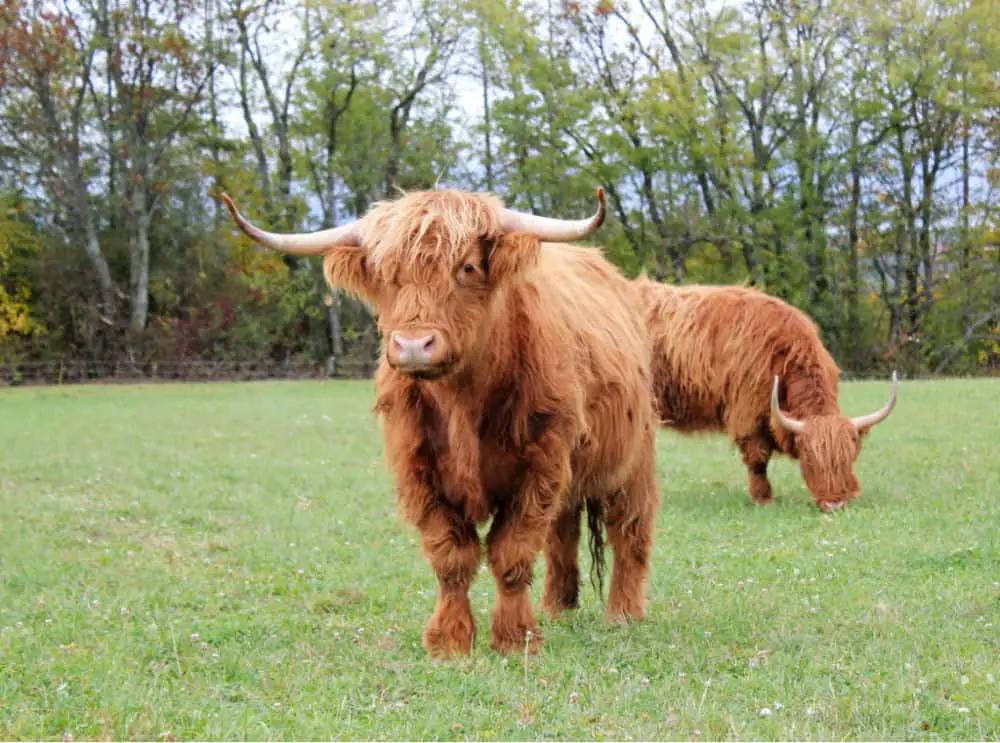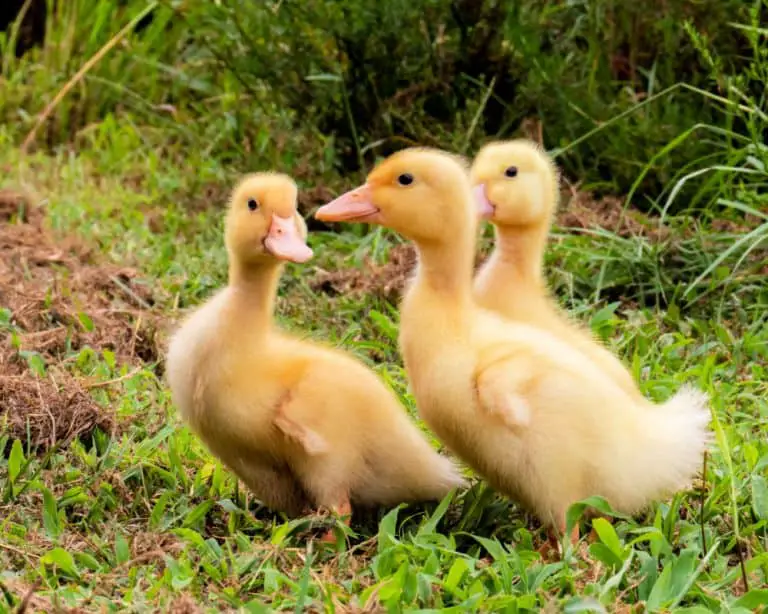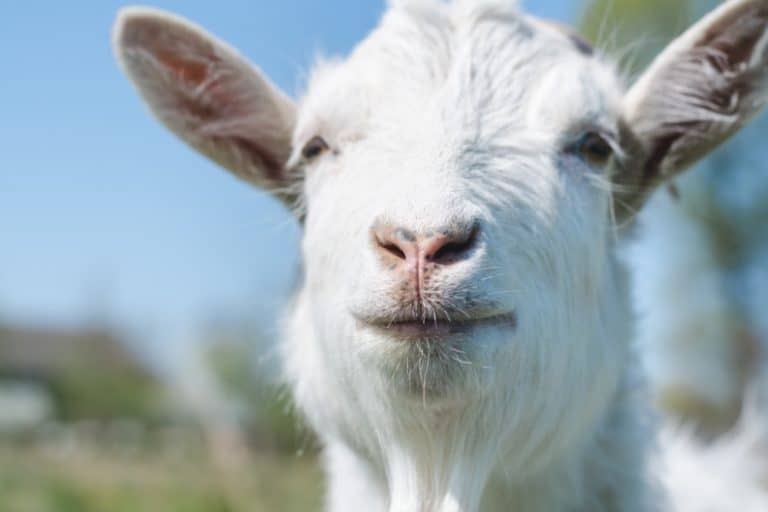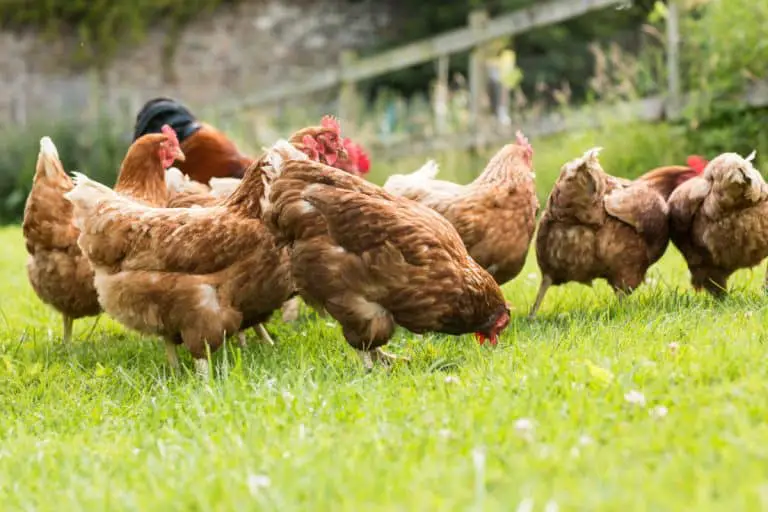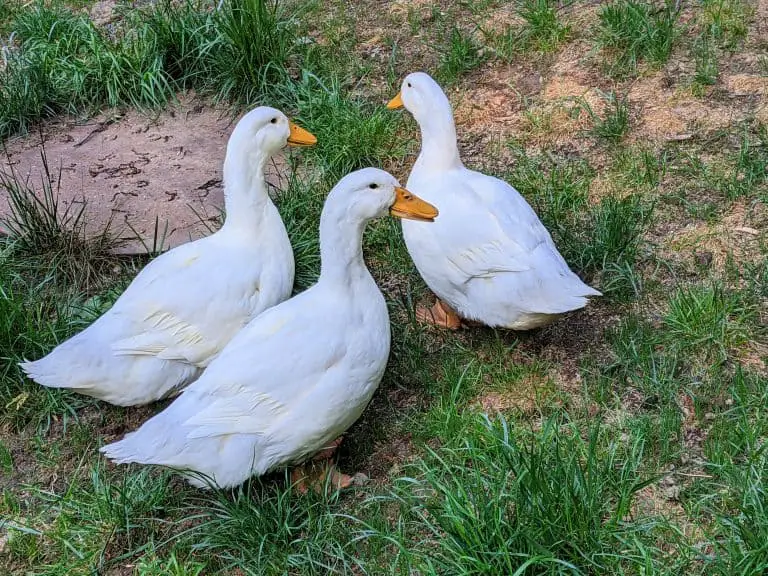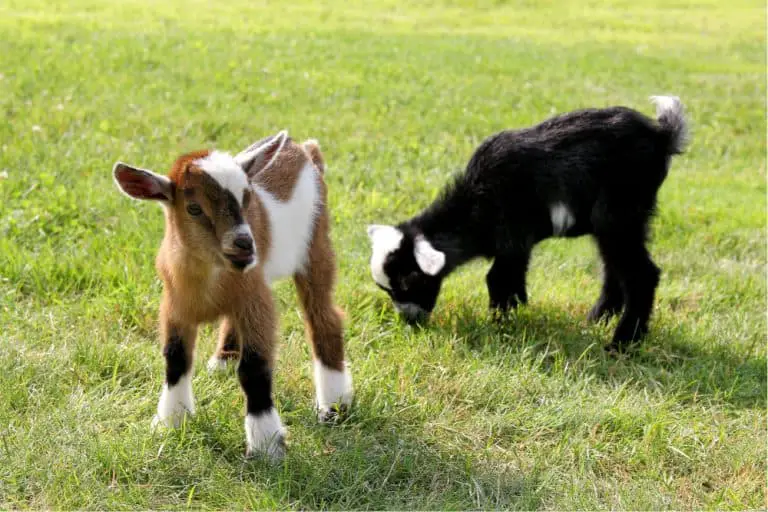Do Highland Cows Make Good Pets?
Highland cows are a distinctive cattle breed with their unique long reddish hair. They are even cuter as calves and look like they can make wonderful family pets.
Highland cows make good pets depending on how you weigh their pros and cons. Some pros include their excellent temperament, trainability, and their other benefits like providing milk or beef. The cons include the risk of being destructive and their need for large spaces.
To help you decide whether to get a Highland cow as a pet, we’ve gone ahead to discuss the advantages and disadvantages of keeping these bovines. And if you decide to get one, this article also covers details of how to have a Highland pet cow. Read on.
What You Need to Know About Highland Cows as Pets
Highland cows are the oldest registered cattle breeds in the world. Throughout history, they have been kept for beef production though they can also provide milk. Their milk has high butterfat content, which some people find appealing.
This Scottish breed, like any other cattle, has, in recent years, been considered as a pet. Since they are so friendly and docile, some people feel they can make wonderful family pets.
Advantages of Having a Highland Cow for a Pet
They Are Good-Looking
Let’s face it. Calves are little cuties when they are born and are still small in size. Just look at this video compilation of the adorable fluffy champs. You can’t help but smile. Here’s an adorable compilation of Highland cow calves so you can see just how cute they are:
They are also almost as playful as kittens and can be fun to pet and stroke. And to make it even better, Highland cows grow up to be stunning adult cows and steers.
The Highlands are classically ginger-red in color, but there are other varied colors, including yellow, silver, brindle, white, dun, and also black. No matter the color, these beasts have a beautiful coat that can grow as long as 13 inches (33 cm). Their horns are also a masterpiece though these are not necessarily an ideal feature for a pet to play with.
They Can Work and Offer Other Benefits
It’s not often that you get a pet that can meet several other needs in a home. So having a cow that gives you milk for your kitchen and steers that help with pulling wagons is a plus. Cattle also offer manure so you can boost your farm’s soil fertility and get better crops as a result.
If you aren’t too sentimental and have a realistic attitude about this particular type of pet, you can also have the option of eventually slaughtering them for their beef. You can do this much later after they’ve lived their full life and given you the companionship you desired.
They Have a Gentle Temperament
Despite their fierce-looking horns, Highland cows are quite docile and have a friendly nature. They like drawing the attention of people. They are also generally peaceful and don’t easily get into fights.
Because of their calm personality, Highland cows can live well with other animals and share their food with them.
They Are Trainable
If you get a Highland cow when it’s still a calf, it’s much easier to train them. They respond well to treats and rewards and can be taught to play with their owner. But this should be done with caution since the calf will grow into a potentially destructive adult much later (as we’ll see below).
They Are Low Maintenance
In comparison to other cattle breeds, Highland cows are relatively low maintenance. They are hardy cows and rarely get sick, so you can look forward to having a healthy pet even as you follow all the health requirements.
This Scottish breed can also calf on its own without much assistance, so the cost of getting a veterinarian for deliveries can be eliminated.
They Have Great Longevity
The Highland has a longer lifespan than other beef breeds. What is more, they also calf many times, even into their eighteenth year. The average number of calves per cow is 12.
The benefits of this long life will be most felt if the cow is well-trained to help out with tasks. You also benefit from acquiring more calves from a calving mother hence adding to your flock.
Challenges of Having a Highland Cow Pet
They Can Be Destructive
Though calves are tiny and cute, they can be destructive when they grow older. For one, as they get used to playing with you and jumping on you if they try this when they are about 1000 lbs (450 kg) adults, that can be very dangerous.
Highland cows are also known to be very protective of their calves and can injure you in a bid to keep their babies safe. Keeping a bull for a pet is also out of the question because these beasts can be super aggressive. You may have to castrate them to ensure they don’t destroy everything.
They Are Expensive to Keep
Keeping a cow requires you to have enough space (i.e., a few acres of land for pasture). Cows take up a lot of space and cannot be kept indoors, especially since they are so big and go around dropping their dung everywhere.
A pet cow would also require sufficient feed (pasture, hay, and grain) on a daily basis. To put that into perspective, a grown cow of about 500 kg (1,100 lb) eats 3% of their body weight each day. That’s about 15 kg (33 lb) of feed daily.
They Are Better in Cold Climate Areas
The Highland cow, originally being from Scotland, is adapted to living in cold climatic conditions. Because of this, they do better in cold places and can easily overheat when the weather is hot. This is thanks to their thick double coat with a woolly undercoat.
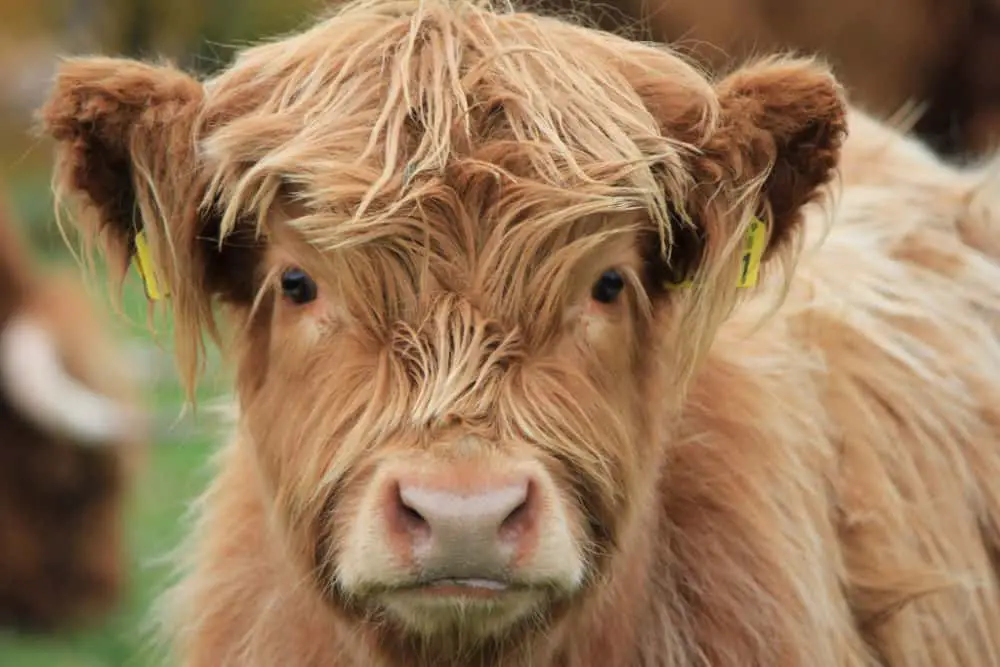
How to Have a Highland Pet Cow
So now you’ve decided to have a Highland cow as a pet. What do you do? How do you go about it? Here are some of the key steps to follow to make this venture a success:
Count the Cost of Keeping a Highland Cow
Before you even go out to buy your Highland cow, you ought to consider what it will cost you to keep the animal. We’ve already mentioned that cows take up a lot of space and eat quite a generous amount of food. Make sure you can provide all these for your bovine pet.
Choose Your Highland Cow Wisely
The next step is to decide what age and gender of the Highland cow you want. You can make your decision based on what other benefits you wish to gain from keeping a pet cow. For example, if you’d like to get milk, then choose a cow over a steer.
Feed and Care for Them
Have all your hay and feed ready for the cow before you bring it home. Provide ample amounts of hay and feed on a daily basis and also enough water. You can also groom your cow to keep them clean and looking neat. Having a little grooming kit will come in handy at this point.
A good health program is also essential for your pet bovine, so ensure they get all the necessary vaccinations.
Offer Proper Shelter
Build a proper shelter for your cow to ensure their safety at night and protection from inclement weather conditions. You should also put up a fence to keep the cows in your land and not leave them wandering off.
Conclusion
As you can see, having a Highland cow for a pet is not a joke. It’s a commitment that should be taken seriously and a decision made after much consideration. But all in all, if you really love these adorable bovine creatures and have all the requirements to take care of one, then you can go ahead and get one.

